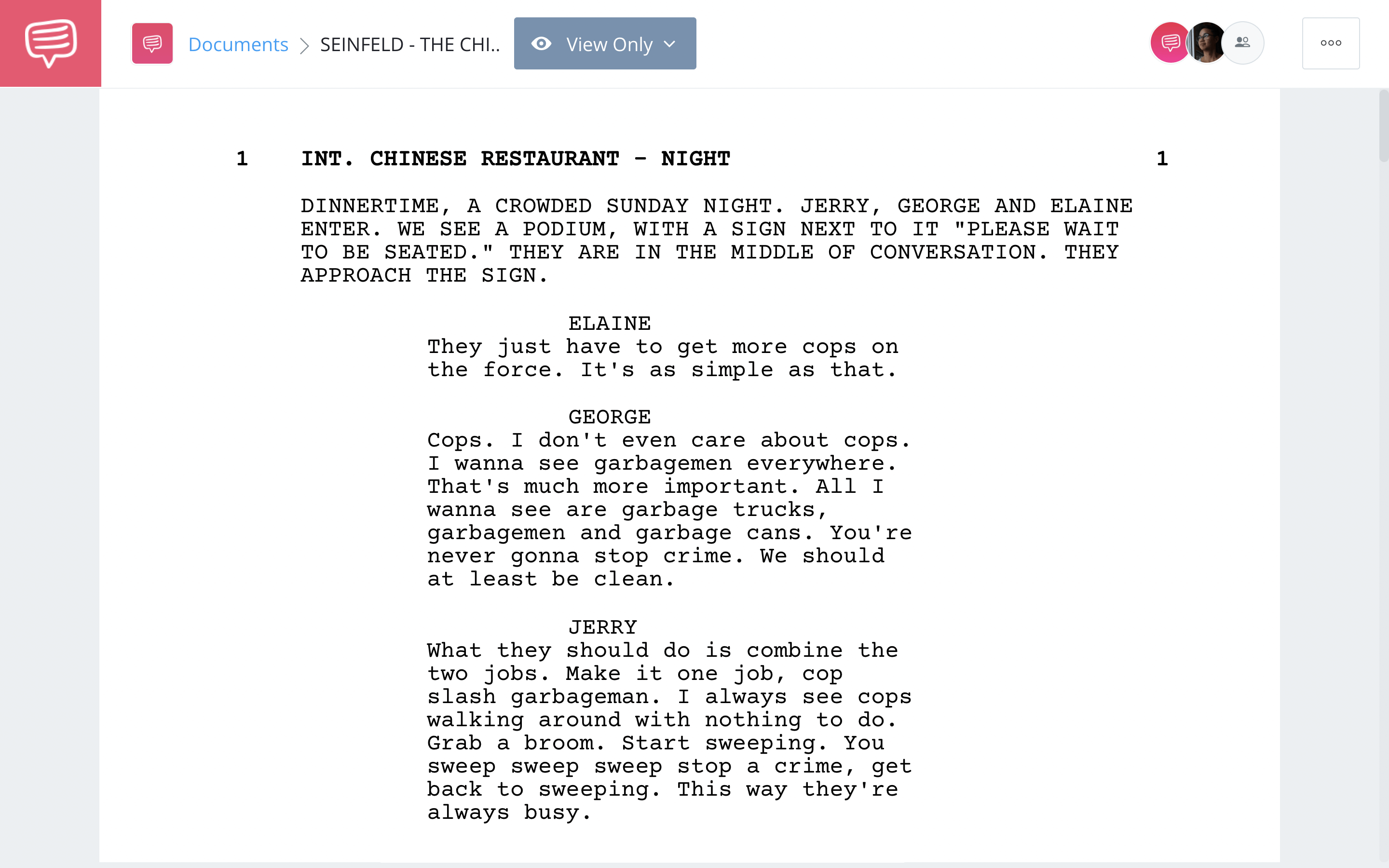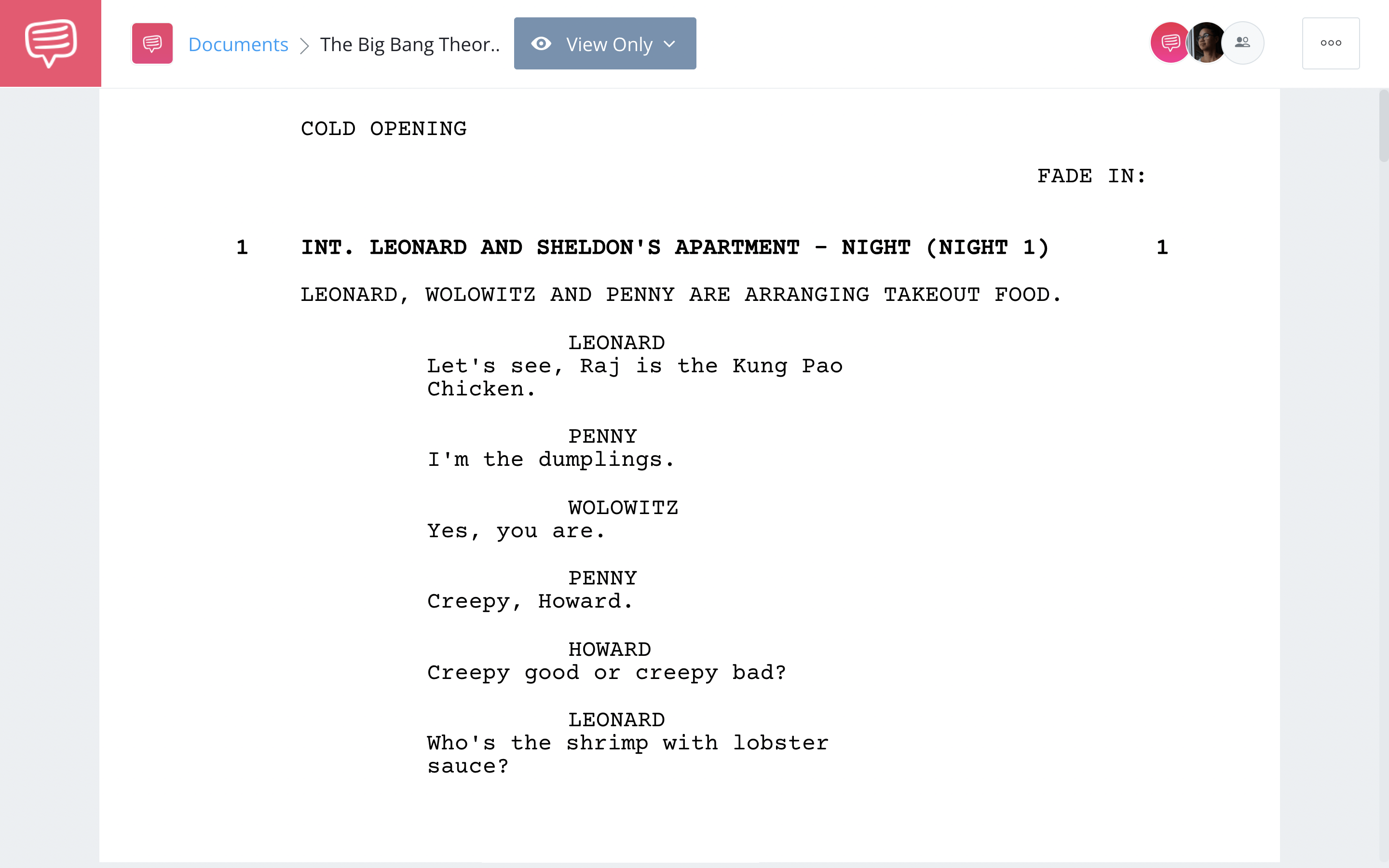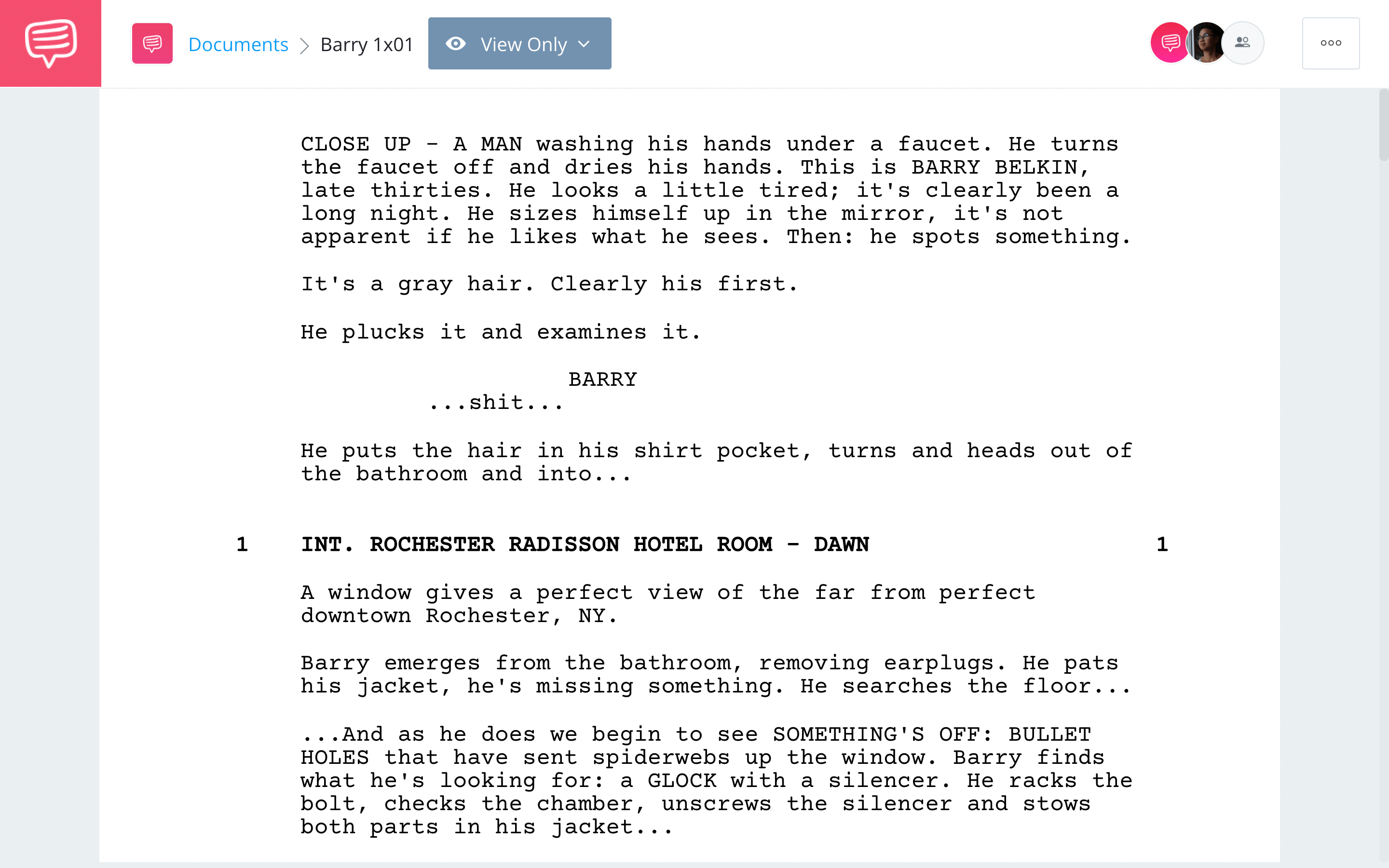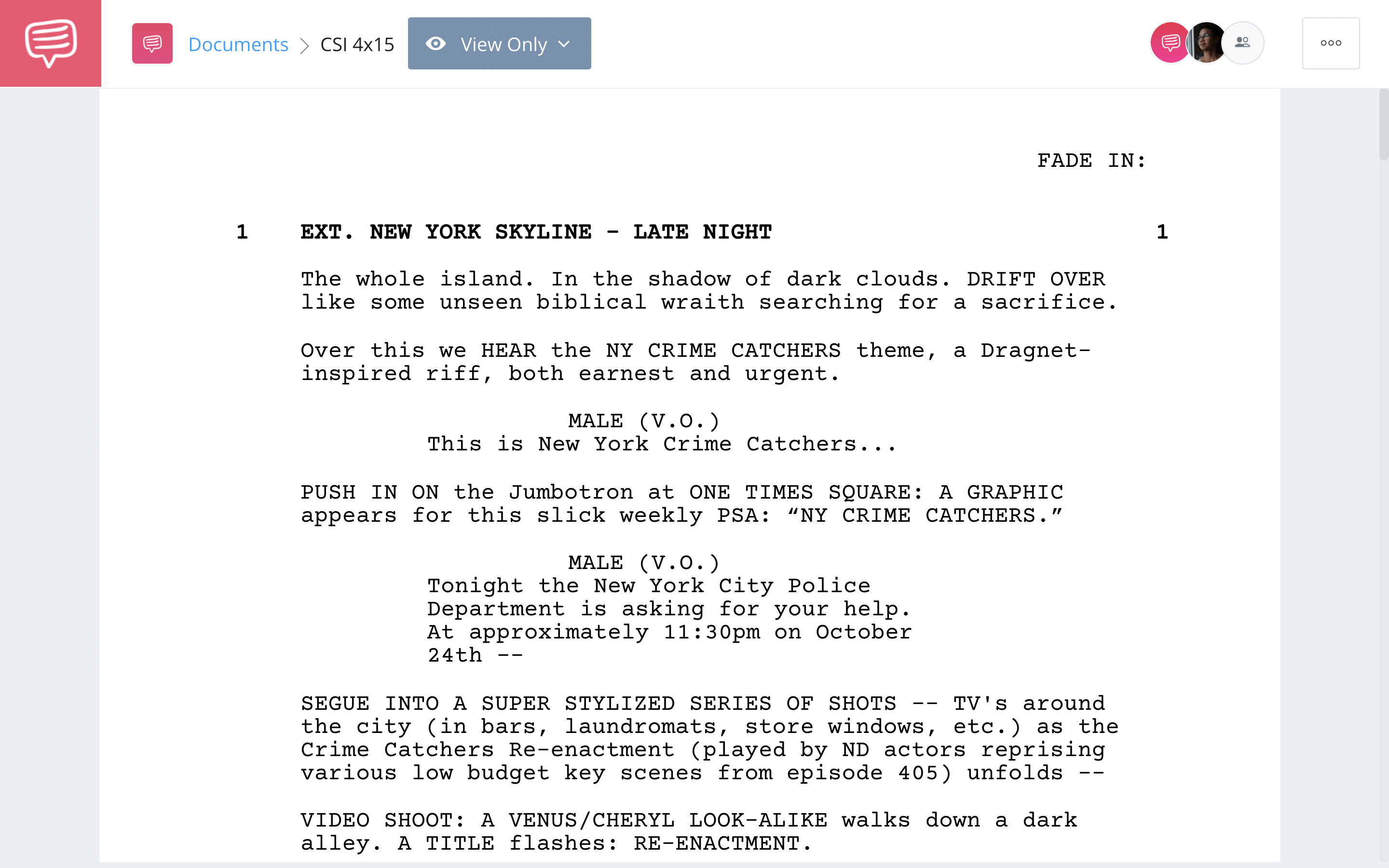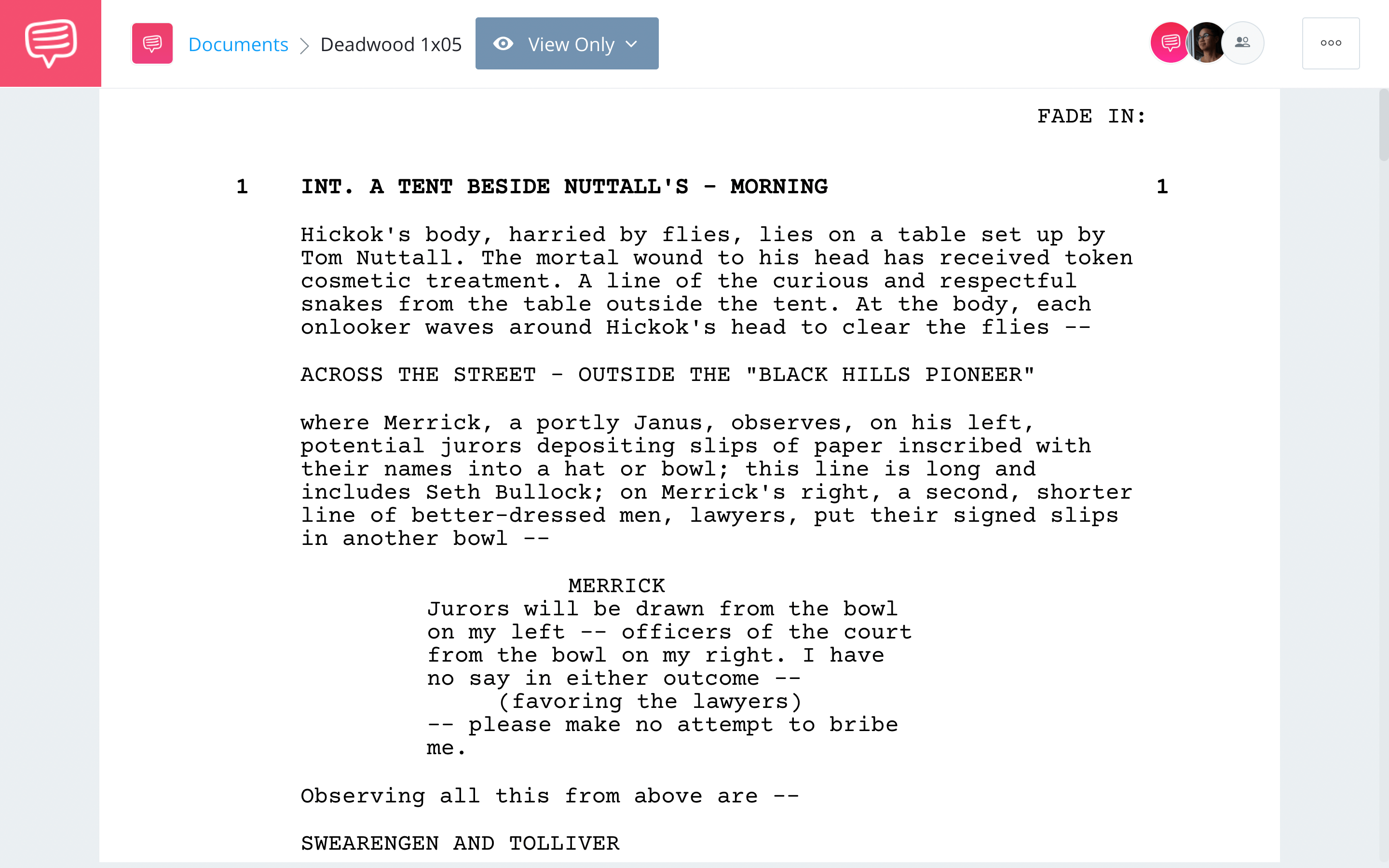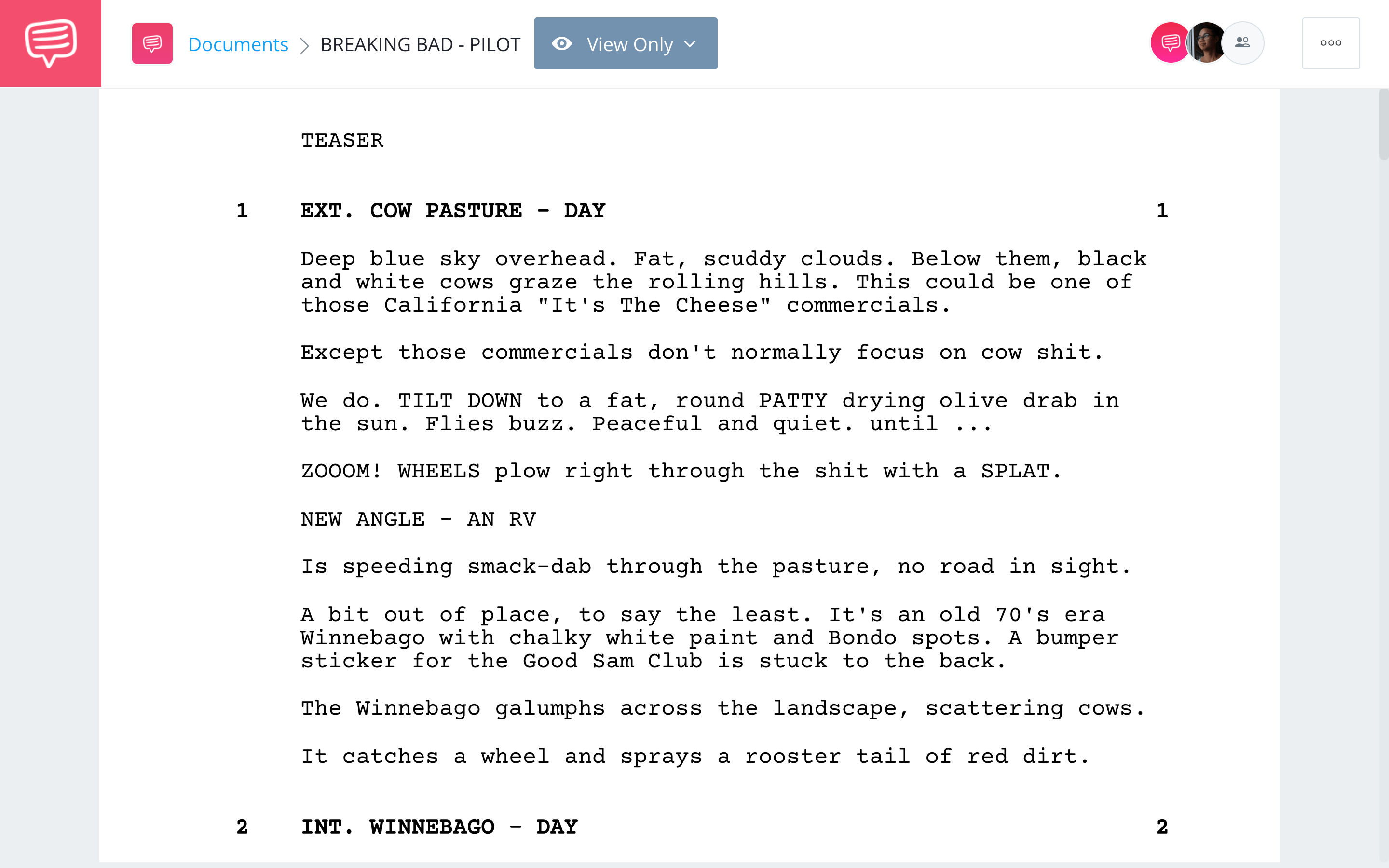TV script format is perhaps the most difficult type of script format to master. That’s because it involves tons of intricacies that screenplays and stage plays don’t. Never fear though, we’re going to break down everything you need to know about TV script format, from 30-minute sitcoms to hour-plus dramas. We’ll look at teleplay examples from Seinfeld, Breaking Bad, and more to see how professional script writers use the format. By the end, you’ll be ready to get started on your very own TV script.
Watch: TV Script Formatting 101 — Ultimate Guide
TV Show Screenplay Format
First, let’s start with the basics
If you’re interested in becoming a script writer for television, then you should consider checking out our TV writing and development masterclass series. The whole series is available on StudioBinder’s YouTube channel – and you can watch the first episode below:
How to Format a Script for a TV Show • Subscribe on YouTube
It may be helpful to think about the conceptual aspects of a TV script before you dive into the margins. As a whole, TV scripts are extremely standardized. However — golden rule: you should always consider the story first, arc and structure second, format third. With that said, let’s jump into a TV script format definition.
TV SCRIPT FORMAT DEFINITION
What is TV script format?
TV script format is the term used to refer to the structure of a teleplay. Television scripts can be anywhere from 20-100 pages, but most are 25-30 for half-hour shows or 50-60 for hour-long shows. Unlike screenplays, teleplays are structured rigorously, and usually written for production.
Types of TV Scripts
- 30-Minute (Comedy or Drama)
- Hour-Long (Comedy or Drama)
- Pilots and Specials
TV Show Script Format Examples
30-minute TV script format
The 30-minute structure is one of the most popular structures in all of television. In the industry’s infancy, many of the highest-watched shows – such as I Love Lucy and All in the Family — were 30 minutes long. The episodes themselves were 24-26 with 4-6 minutes of commercials to break up the scenes. Fast forward to the mid-'80s and it seemed like every popular show was 30 minutes long. The data table below shows the most popular television series from 1986-2019.
TV Screenwriting Format • Most Popular TV Shows
All of this is to say that if you want to be a TV writer, then you need to know how to write a 30-minute script. But how do you do that? Well, there’s probably nobody better at it than Larry David. We imported the Seinfeld “The Chinese Restaurant” teleplay into StudioBinder’s screenwriting software to see how Larry and co-writer Jerry Seinfeld utilized TV script format.
For the purpose of learning more about TV script format, pay closer attention to the margins, actions, and sluglines than the story itself.
TV Script Format Examples • Read the Seinfeld ‘The Chinese Restaurant’ Teleplay
One of the first things you’ll notice about “The Chinese Restaurant” script is that its acts are outlined. In this sense, teleplays are more similar to stage plays than screenplays. Make note that “The Chinese Restaurant” only has two acts, while most 30-minute scripts have five. Here are some other things you should remember when writing a 30-minute teleplay.
Sluglines are always underlined
Actions are written in ALL CAPS
Page numbers go in the top right-hand corner
The most popular 30-minute show of the 2010s was The Big Bang Theory. One could argue that much of the show’s success could be attributed to the fact that production ran it like clockwork. The Big Bang Theory had rock-solid scripts; not in terms of quality but in terms of quantity and precision.
Remember, network sitcoms are meant to draw viewership, then run for as long as their legs will sustain them – that’s what The Big Bang Theory did. Let’s look at a script for The Big Bang Theory to see why it was so successful. You’ll notice that the script begins with a “cold open” which serves to set-up the events of the episode.
TV Script Format Examples • Read The Big Bang Theory Script
If you’ve read movie scripts before, then you’ve probably noticed that there’s a lot of variation in format and style. For example, take any two screenplays, and you’re bound to find stylistic differences. With TV writing, there’s no room for that. TV script format is always set-up the same way, with acts, actions, sluglines, etc. The narrative structure is usually set-up the same way – but that has less to do with rigidity than anything else.
Network TV is all about popularity. If you want to write 30-minute episodes for network TV, then you’re going to need to adhere to the formatting of the most successful shows, like Seinfeld and The Big Bang Theory.
With the advent of streaming services, the 30-minute TV script has taken new forms. Take HBO’s Barry for example. The Barry pilot script is structured more in screenplay format than network TV script format. You’ll notice that acts aren’t outlined in the script, nor are the actions written in all-caps.
TV Drama Script Format • Read the Barry Script
Just remember that Barry was written by Alec Berg and Bill Hader, two established writers; and that the Barry script wasn’t written for network audiences. If you’re writing a 30-minute script on your own, don’t get hung up on the intricacies of TV script format. But if you’re planning on joining a writer’s room, then you’re going to want to make sure you know how networks want their scripts to be formatted.
Related Posts
How to Format a Script for a TV Show
60-minute TV script format
The 60-minute TV script format offers a bit more room for flexibility than the 30-minute TV script format. But when I say a bit, I mean a really small bit. Just like the 30-minute script, the 60-minute script is tuned for network TV more rigidly than it is for premium cable.
First, let’s take a look at a 60-minute procedural script. But what is a procedural script? A procedural script is a script that follows a specific narrative structure. Think every law enforcement show in existence: FBI, NCIS, Law & Order, S.W.A.T., and yes, CSI. All of these shows are procedural – so as to say we know what to expect – bad guys do something bad; good guys take the case; good guys struggle; good guys capture bad guys. People love it.
Let’s take a look at a CSI script to see how it’s formatted.
TV Show Script Format Examples • Read the CSI: New York Script
You’ll notice that the episode begins with a teaser. Pretty much every 60-minute script has a teaser, and it’s essentially there to serve the same purpose as a cold open – to thrust us into the action before the opening credits/title card. You should also take note of the scene headings. It’s common practice in screenwriting and TV writing to mark each new scene in the shooting script. If you’re writing a spec script or draft, don’t worry about marking scenes.
Now let’s look at a 60-minute script that was written for premium cable. This next script is for Deadwood, Season One, Episode Five. You’ll notice that much of the structure is the same as CSI, but the dialogue is much different.
TV Show Script Format Example • Read the Deadwood Script
When you’re writing for a premium cable provider like HBO, you’re given a lot more flexibility with what you can say and what you can show. Since this is a mid-season episode script, the writer probably had a good idea of the parameters they had to work with. If you’re writing a 60-page spec script, don’t be afraid to use vulgar language, gratuitous violence, etc. – just be mindful that it may exempt you from getting your script seen at certain networks.
Related Posts
Television Script Format Example
TV pilot script format
I’d venture to say that 99% of successful TV writers have worked on a pilot. Think about it: every story needs a beginning. How does a TV show begin? More often than not, with a pilot. But what is a pilot episode? A pilot episode is the first episode of a TV series that serves as a proof of concept to the network. If the pilot is successful, then the show will likely be greenlit for a season order.
Let’s take a look at how to write a TV show pilot script that sells, by breaking down the pilot for Breaking Bad.
Format for Writing a TV Script • Subscribe on YouTube
One could surely credit the success of Breaking Bad’s pilot to its great story – but a great story will only go so far without proper execution. Fortunately, writer Vince Gilligan did a great job of nailing the TV script format.
TV Show Screenplay Format • Read the Breaking Bad Pilot
Vince Gilligan directed the pilot episode of Breaking Bad in addition to writing it. Did you notice how shots are written into the script? That’s generally considered taboo. It’s likely that Gilligan had already been approved to direct the episode by the time this script was produced, therefore he wrote in the camera directions as well.
studiobinder tools for writing tv script
Get started on your own TV script
There you have it. We covered all the bases of TV script format, with examples from some of television’s most popular and acclaimed series. Now it’s time for you to get started. Try StudioBinder’s software – it’s free to get started and will give you all the tools you need to bring your TV script to life.
Related Posts
UP NEXT
Teleplay vs. Screenplay vs. Script
If you’re looking to learn more about script writing techniques, then you’re not going to want to miss our next article in which we review what makes teleplays different from screenplays and scripts. We break down examples from 30 Rock, Malcolm in the Middle, and Star Trek, to show you how to utilize Hollywood lingo.

